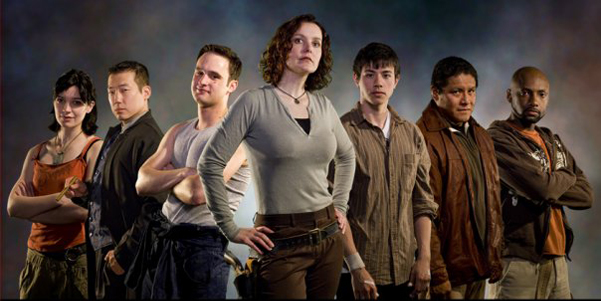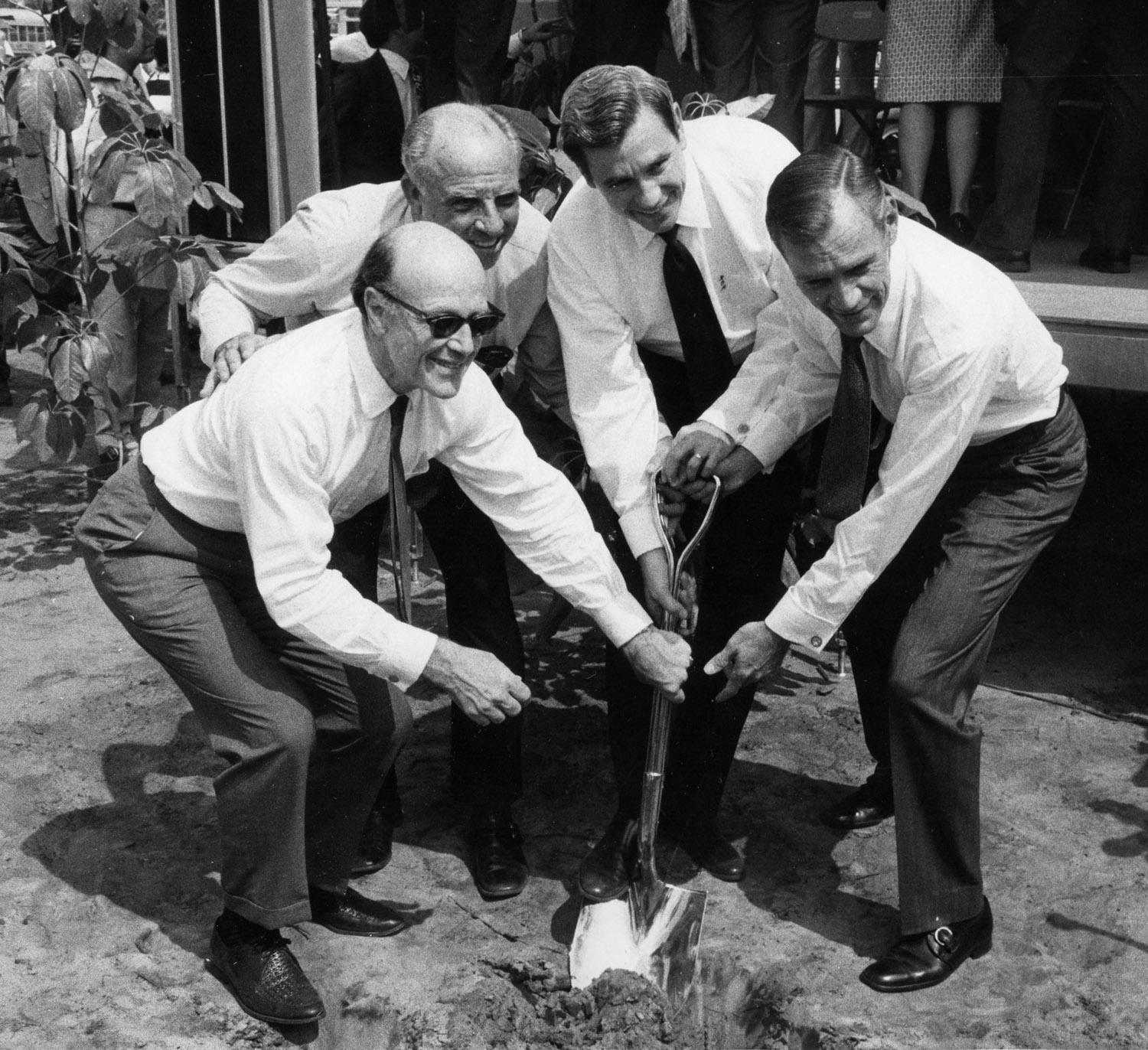Entries Tagged 'philosophy' ↓
October 10th, 2010 — baltimore, business, design, economics, geography, philosophy, politics, trends
When I was about four years old, my parents asked me what I wanted to be when I grew up. My response? A cashier. Why? They were the ones who got handed all the money.
Today, when people cite crime and education as the two major problems facing America’s cities, the knee-jerk response is to “protect city education budgets” and “put more cops on the street.” This is the same kind of simplistic logic I used as a child, and it’s just as wrong.
If this was how things worked, the safest cities in the world would be populated entirely by police, and the highest levels of education would be attained by those countries who spent the most on teachers and schools. This also is not true. Excluding repressive regimes, the areas with the least crime and most educated populations tend to be places where all citizens have access to the same opportunities.
Access to Opportunity
The new film by Davis Guggenheim, “Waiting for Superman,” chronicles a year or so in the life of a handful of students of different backgrounds as they struggle to get access to the educational resources they need to thrive. The heart-wrenching conclusion shows these kids – all but one – get denied that opportunity by a system that is clearly broken and unfair. 720 applicants, 15 spots. You get the picture.
If America is going to have a public school system, this kind of unfairness should not be tolerated. What happens to the kids that don’t get into the schools that can help them thrive? Should people have equal opportunity? Most people would say “yes.”
How We Got Here
Economic vitality is a kind of spotlight: it shines a light on things that need fixing, and provides the funds and political power to do so. Since our cities were torn apart by race riots and the global consolidation of manufacturing, the resulting precipitous decline in economic health has meant that cities have operated substantially in the dark. Watchdogs have been absent, and grassroots efforts have been underpowered.
American cities have reached a kind of feudal equilibrium. Politicians in power have little incentive to promote the kind of broad-based economic growth that could ultimately result in their ouster, but they can’t let things deteriorate so badly that everyone leaves – also stripping them of their power. And so American cities walk the line: with crime, schools, drug use and taxes locked at levels that are tolerable to just enough people that they are still worth milking, all while politicians hand out favors to power-brokers and childhood friends. Enough.
Ending the Abuse, from the Bottom Up
I wrote in my previous post that cities are now prime locations for idea-based industries. Over time this will mean an influx of wealth into cities as well as an increase in poorer populations in the suburbs.
Economic vitality in our cities borne from idea-based industries will result in a demand for accountable leadership and provide new levels of participation. In short, the feudalism will end when creative people begin to use their economic power to demand real change. The 40 year free ride is over.
Too many people in cities have resigned themselves to the idea that politics is a top-down enterprise — that it’s primarily influenced by the machine, by power-brokers, by community leaders, or by churches. Or that there’s a “turn based system,” where everyone who serves is given an equal shot unless they do something wrong.
That’s just wrong. American city politics from now on will be a bottom-up grassroots affair dictated not by the economics of writing checks to campaigns, but by the interdependent economics of jobs and a shared vision for the future of places that people care about.
Restoring Trust
To be workable, all power relationships must be a compact founded on shared values. Kids trust teachers that have their best interests at heart. Citizens trust cops who behave consistently and fairly. People trust politicians who put the civic interest ahead of their own.
There is nothing that ails us that cannot be fixed by restoring these trust relationships.
In “Superman,” Guggenheim asserts that bad teachers are kept around out of a “desire to maintain harmony amongst adults.” It’s difficult to stand up and fight to end someone’s teaching career, but it’s what’s required. To fail to do so is immoral.
It’s easier to keep getting a paycheck than to make enemies. And certainly there are dozens of systemic problems that make firing teachers very difficult. But that’s all that’s wrong with our schools, our police and our politicians: a simple failure to defend our core values.
And if we cannot agree on those core values – if a desire for personal gain exceeds a willingness or ability to serve the public – then those people deserve to be called out.
The Game Is Up
To be an old-school politician in a major American city today is to be in the way of a major cultural shift. Idealistic, intelligent, educated millennials armed with 21st century political weapons are coming, and they are going to ask why?
Why is the city so screwed up? Why are these jokers in power? Why are these incompetent teachers shuttled between schools? Why is more money spent on development deals for cronies than on parks? And why the hell can’t we clean up the blight that makes any trust or pride impossible?
Should we spend more money on schools or police? More than likely, all we need to do is let smart young people start asking questions. Crime and education take care of themselves if those that have violated the public trust can be removed from power. And with a little attention and common sense, we can ensure that more kids have a shot at the same opportunities.
Because in the end, crime, education, and blight are really just one problem, and it can be cured at least as quickly as it developed.
October 9th, 2010 — baltimore, business, design, economics, geography, philosophy, trends
Some have predicted that high energy costs, either due to decreasing supply of oil or costs associated with carbon emission mitigation, will soon push people out of their cars and onto public transportation.
But there’s something else happening: people are getting sick of spending time in transit at all, making city living increasingly attractive. We are now increasingly able to infill “scrap-time” during our days with useful activity, and location-based social networks make it possible to maximize personal connections as we move about. We are engineering our own serendipity to generate real value from every moment. Why would we squander that potential by spending time in transit of any kind?
In the future, I predict:
- Air travel will be reserved for trips greater than 500 miles
- Trains will be used for trips less than 500 miles
- Bicycles, walking, and local transit will be used within cities
- Any local trip longer than 20 minutes will be seen as burdensome
- Cars will be seen as a luxury to be used for road-trips + utility hauling
And again, this will not happen due to fuel scarcity alone – it will happen because people demand it; and I’m not talking about you – but your kids and grandkids.
Regardless of what happens with fuel prices, we know that roads do fill to their available capacity. And then that’s it. Expansion does not help for long, because roads then fill to whatever capacity is available and development occurs until roads are too broken to use.
Roads are also increasingly expensive to build. A major construction project such as the popular-but-doomed Intercounty Connector in Maryland will cost over $2.6Bn to build. Is this a good long-term use of resources? Seems to me we’re throwing a bone to some 55 year-old commuters who have been annoyed with the state of the Washington Beltway since it was built, and this is the only solution they thought could fix it. Enough with the reductionist, idiotic causal thinking already: it’s a dumb idea. I don’t begrudge it, but in the long term, who cares?
The idea-driven creative industries that America has hung its hat on can only thrive in cities, where people can get together and trade ideas freely. Any barrier to that exchange lowers the potential net economic value. Put simply, all of this kind of creative work will happen in cities. Period. Because if we don’t do it in cities, we won’t be able to compete with our peers around the world who will be doing this work in cities.
So, what of the suburbs? In many European cities, the urban centers have been long reserved for the upper-class elites; poorer immigrants, often Turks and other Islamic communities, tend to inhabit the outer rings of the city – denying them crucial access to economic opportunity. This kind of social injustice is baked into many European cultures; in France, you are simply French or not French, and no amount of economic mobility will allow someone who is not of that world to sublimate into it.
This is not the case in America. We are all Americans, and even marginalized citizens are able to fully participate in all levels of our culture – though certainly there is social injustice that must be overcome.
Over the next 50-75 years, there will be a net gain of wealthier people in America’s cities and also a net gain of poorer people in our suburbs. This will be a natural byproduct of an increasing demand to be in cities, and an increasing (and aging) suburban housing stock coupled with roads that no longer function.
To fulfill our challenge as Americans, we must use these dual gradients in our cities – the inflow of the rich and the outflow of the poor – as an opportunity to maximize social justice. By avoiding flash-gentrification and fixing education as we go, we can in a span of 20-40 years (1-2 generations) offer millions of people a pathway into new opportunities that stem from real, sustainable economic growth; all the while realizing this is going to mean more color blindness all around – and that suburbs will generally be poorer than the cities.
In my home state of Maryland, the only foreseeable damper on this force is the federal government and the massive amount of money it injects into industries like cybersecurity and other behemoth agencies like the Social Security Agency.
Because these agencies and the companies that service them generally do not have to compete globally to survive, they can locate in the suburbs and employ people that live in the suburbs – and subsidize all of the inefficiency, waste and boredom that comes with that.
This is nothing but a giant make-work program and its benefactors are little more than sucklings on the federal government’s teat, which is spending money that will likely come straight out of your grandchildren’s standard of living. Right on.
Cybersecurity, for all its usefulness in possibly maybe not getting us blown up by wackos (bored wackos from the European Islamic suburbs, I’ll point out), is nothing more than a tax on bad protocol design. For the most part it doesn’t create any new value. In the end, we’ve got suburban overpaid internet engineers fighting an imaginary, boundless war with disenfranchised suburban Islamic radicals. Who’s crazier?
Lastly, for all of you who think I’m wrong or resist these predictions because you personally “wouldn’t do that” or can produce one counterexample, I ask you: Are you over 35? If so, your visceral opinion may not matter much. I fail this test myself, but I believe my argument is logically sound and is based in the emerging attitudes of young people.
The future will be made by people younger than we, and based on everything I can see, we are on the cusp of a major realignment of attitudes and economics in America.
It won’t be too much longer til active, entrepreneurial creative professionals (black and white) in our cities look at the suburbs (black and white) and decry the entitlement culture of the suburban welfare state.
August 1st, 2010 — art, baltimore, business, design, economics, geography, philosophy, politics, software, trends

Putty Hill, a film by Matthew Porterfield (2010)
Something amazing is happening in the world of filmmaking. Crowdsourced funding mechanisms like Kickstarter.com are enabling a new generation of filmmakers to get a foothold doing what they love, where they want to do it. They’re using social media to find acting talent, and new digital camera technologies are making it possible to create amazing high quality films for a fraction of what it used to cost.

Matthew Porterfield
I’m particularly impressed by the work of Baltimore filmmaker Matthew Porterfield, whose films “Hamilton” (2006) and “Putty Hill” (2010) exemplify the new kind of “cinepreneurial” skillset which will certainly come to define 21st century filmmaking. (You can read here about the funding and creative process behind Putty Hill.)
Porterfield is a nice, unassuming guy who teaches film at Johns Hopkins and directs his students that if they want to make documentaries, they need to go to New York, and to go to Los Angeles for pretty much everything else. For today, this is sound advice. It’s the same kind of advice you’d give talented coders looking to unleash the next big web technology — go to San Francisco, because it’s where the industry is centered — at least right now.
But if you ask Porterfield why he doesn’t take his own advice, he’d likely offer a cryptic sort of answer — that he’d considered it but really couldn’t imagine himself anywhere else. I don’t know him well enough to speak for him, so I hope he weighs in here. But Matt and I are kindred spirits: we both are actively choosing place over anything else, and investing our time and talent to make it better.
Let’s Invest in Maryland Film, Not in Hollywood
Baltimore and Maryland have been the home to many well-known movie and television productions over the years, not the least of which have been Homicide: Life on the Street, The Wire, and a slew of Baltimore native Barry Levinson’s films including Diner, Tin Men, and Avalon. And most all of these productions received significant subsidies from the State of Maryland.
As budgets have continued to tighten, the O’Malley administration made a strategic decision to cut back on investment in film production subsidies. And that has probably been a very wise decision. Other states have been more than willing to outbid Maryland, offering ridiculous breaks. And Maryland really doesn’t need to be in yet another race to the bottom.

The Curious Case of Benjamin Button (2008)
The film The Curious Case of Benjamin Button (2008) was based on a short story by F. Scott Fitzgerald (who lived around the corner from me in Bolton Hill when he wrote it), and it was originally set in Baltimore (original text). Yet the film version was set in New Orleans and had a subtext about a dying woman retelling the story as Katrina bore down on the city. Why? Subsidies. New Orleans offered more subsidies than Maryland would. And so the story was changed and moved there. Who knows if the Katrina storyline was a condition in the contract!
I don’t really have an opinion about whether Benjamin Button should have been filmed in Baltimore, but I do have an opinion about engaging in zero-sum games with 49 other desperate states: it’s bad policy. And I also think the time has come to admit that big movie studios are the next big dinosaur to face extinction. Why should Sony or Disney or Universal make the bulk of the world’s content when every man, woman, and child has access to a $200 HD camera and a $999 post-production studio?
Investing in Cinepreneurs
John Waters is one of Baltimore’s great artistic assets. And it’s not because of film subsidies. His work is known worldwide, and it celebrates the quirky, distinctive voice of Baltimore. Matthew Porterfield is distinctive and quirky too, and he makes beautiful pictures: he’ll be next to make his mark. And there are dozens more teeming around places like MICA, the Creative Alliance CAMM Cage, Johns Hopkins, Towson University, and UMBC. We need only to nurture their talent and the ecosystem.

Browncoats: Redemption, 2010
Another film, Browncoats: Redemption was made locally last year and created by local entrepreneurs Michael Dougherty and Steven Fisher. It is utilizing an innovative non-profit funding model. The film’s is raising money for five charities and it leveraged social media and Internet to recruit 160+ volunteers and market the film.
Instead of blowing money on Hollywood productions that bring little more than short term contract and catering work to Maryland, why don’t we instead start investing in the artists in our own backyard? Just as IT startups have gotten much cheaper to jumpstart, it’s now possible to make films for anywhere from $50 to $150K. If we dedicate between $5M and $7M to matching funds raised via mechanisms like Kickstarter, we could make something like 150 to 300 feature length films here in Baltimore. This would unleash a new wave of creativity that would yield fruit for decades to come, and put Maryland on the map as a destination for filmmakers.
We already have great supporters of film in the Maryland Film Festival, Creative Alliance, and many other organizations. It wouldn’t take much to get this off the ground. Instead of going backwards to the 1980’s in our view towards film production (as former Governor Ehrlich has recently proposed), let’s take advantage of all the available tools in our arsenal to jumpstart the film industry and move it forward in Maryland.
For every new artistic voice we nurture, we’ll be building Maryland’s unique brand in a way that no one else can compete with. It will make an impression for decades. And investing in film and the arts will help the technology scene flourish as well. Intelligent creative professionals want to be together. And coders and graphic artists think film and filmmakers are pretty cool.
We shouldn’t let an aversion to the failed subsidy policies of the past get in the way of forging a new creative future that we all can benefit from. We can invest in the arts intelligently. Let’s start today.
July 31st, 2010 — baltimore, business, design, economics, geography, philosophy, politics, software, trends
I live in Baltimore, in the great state of Maryland. I’ve been studying the economic development process here for many years. While this post contains observations specific to Maryland and Baltimore, the concepts likely apply in other geographies as well. I am curious to hear your perspectives from where you live.
 Shh… they don’t know they’re obsolete!
Shh… they don’t know they’re obsolete!
There’s a growing disconnect in economic development. Government sponsored economic development outfits are tasked with 1) growing the tax base, 2) attracting new businesses, 3) helping existing businesses grow, 4) aid in the creation of new businesses, 5) develop and grow the local workforce.
In Maryland, the State Department of Business and Economic Development traces its roots back to the Bureau of Statistics and Information, which was formed in 1884 to compile statistics about agriculture and industry. As industry shifted dramatically in the 1950’s and 1960’s, the focus shifted to providing small business loans and seeding the development of new jobs.
Vast consolidation in manufacturing starting in the 1970’s meant that states were particularly anxious about job losses. The loss of a single plant could deal a staggering blow to the tax base, and could mean a huge loss of jobs — often leading to a demoralized workforce and a downward spiral of negative economic growth. (Think Detroit.)
The Zero-Sum Game
As a result of this process, states began to engage in heated battles to attract and retain manufacturing facilities. The primary tool available to economic development authorities has traditionally been tax credits and other “incentives,” which might include deferred taxes, regulatory considerations, and a “turnkey” permitting process.
As states rushed to use these tools to attract and develop these “big projects,” a kind of zero-sum game emerged between states trying to attract companies and capital. Large corporations were now in a position to effectively “shop” for the sweetest incentives. As you likely know, states have not shown much restraint in their willingness to offer breaks. In fact, it’s all been very embarrassing — a rush to the bottom, where states compete not on their own merits, but on how many baubles they can afford to dole out to their latest suitors.
This disease has so stricken governments, Governors, and their economic development teams that they’ve developed an unhealthy obsession with “big projects” as well. Folks in government, who on average have very little first-hand experience with entrepreneurship or business, tend to think in “causal” terms. If we do X, then Y will happen. And so the logic is that if you want a big result, take a big action.
And so they chase after smokestacks and big iron, trying to attract heavy manufacturing, big developments by big developers, corporate headquarters, sports teams, stadiums, and slot parlors. But here’s the paradox: these projects, while flashy, just don’t pay off. Tax subsidies are never recouped, and the jobs that are created tend to be bottom-of-the-barrel service industry jobs that barely support a living wage.
Baltimore’s subsidized Camden Yards stadium produces $3 Million per year in tax revenue, but costs Maryland taxpayers $14 Million per year in subsidies. The heavily subsidized Ravens stadium produces $1.4 Million per year but costs taxpayers $18 Million. Failure to impose or enforce job quality standards as part of subsidy packages provided to multiple hotel developments in Baltimore has led to many low-wage jobs and nearly none of the higher paying jobs that were promised. (These conclusions were taken from this report by the group Good Jobs First.)
New Approaches
Maryland, in an effort to develop a strategic focus on biotechnology, instituted a $6M program of tax credits (later increased to $8M) for investors in biotechnology companies. The program has proved wildly popular, and to Maryland’s credit, it recognized the importance of investing in an industry that had already taken root here and, thanks to the presence of the National Institutes of Health and Food and Drug Administration, was a natural strategic focus for our area.
The only question is how effective the biotech tax credit is at actually developing these kinds of jobs in the long term. It’s a little early to judge how effective the biotech tax credit program will be, but we can make these qualitative observations about that industry:
- Developing a new biotech product (whether a drug, device, or process) has a very long lead time.
- Because of long lead times and the need for highly-skilled workers, development is very expensive.
- Failure is common and is often stark: big bets on molecules that don’t pass approval processes or are copied by competitors can lead to epic financial losses.
- The kicker: successful companies are often acquired by firms based elsewhere, leading to job losses or relocations, ultimately undoing the benefit originally intended.
I do not want to overemphasize the potential downsides; there are many tangible benefits of this program both now and in the long term. The only question is whether we can do better.
Betting On Ourselves
What if, instead of trying to offer subsidies to outsiders, we start investing in ourselves? A tax credit for biotech is a step in that direction, but what could we do with a comparable program for Internet and IT startups? What if we made investment capital available to Maryland businesses as part of a strategy to develop new companies that actually stay here for the long term (and are not susceptible to subsidy bribes from other locales)?
A new program called Invest Maryland has been proposed by Governor Martin O’Malley, and is based on similar programs instituted in other states. The program would make $100 Million in venture capital available to Maryland businesses. Funds would come from tax prepayments made by insurance companies in exchange for tax credits. The theory is that the cost of the tax credits would be exceeded by the benefit in business development provided by the venture investments.
Done properly, this is probably a very sound program. But to be maximally successful, I believe we need to start placing strong bets on information technology startups in particular:
- IT startups are very capital efficient. Thanks to lean startup methodologies, IT startups can get up and running for as little as $50,000 to $150,000 in investment.
- Maryland already has the highest concentration of information technology workers in the world. It’s a strong strategic fit for exactly the same reasons that biotech investment is a good fit.
- To achieve strong returns with early stage investments, it’s often necessary to invest in 150 or more companies. The small capital requirements of IT companies allow for many more investments to be made with less capital, thus increasing the odds of success.
- A large portfolio of seed-stage IT investments can yield internal rates of return of up to 25-30% annually, which is terrifically high. That is in addition to the benefit of building a permanent base of IT businesses in Maryland, and all the job and tax-base benefits that would bring.
- A large number of ventures would, statistically, also have to produce a large number of failures. This culture of continuous endeavor would de-stigmatize failure and allow for repeated teaming and relationship building. Inenvitable losses are not losses, but in fact fertilize the forest floor — building the ecosystem for the long term.
- A culture rich in startups will keep us from exporting our best and brightest to other places, which we do routinely right now.
$10M for IT Startups
As Maryland’s leaders and legislators consider the Invest Maryland initiative, I propose that the state set aside $10M of its $100M fund specifically for IT startups. With that $10M, I propose that Maryland invest in up to 200 seed stage IT firms at anywhere from $50K to $150K per company.
Doing this well will be difficult. However, by partnering with existing entities such as Baltimore Angels and members of the business community, we can make that investment maximally productive. We’d need to figure out the details, but we can’t expect government employees to make these investments on their own without domain expertise. By leveraging the people in the community that want to see these investments occur and who do have appropriate domain expertise, we can dramatically increase the effectiveness of this fund.
And if the initial $10M investment proves effective, we should consider enlarging the program to $25M or higher later. This strategy carries very little risk for the state and would create a stunning worldwide buzz about the vibrancy of the startup culture in Maryland, and would highlight the innovative private-public partnership that sparked it.
Thinking Small
The businesses we routinely cite as our biggest successes — Under Armour, Advertising.com, SafeNet, Sourcefire, Bill Me Later, to name a few — all came about as home-grown successes. They are not here because we brought them here from someplace else. They’re here because they were grown here from scratch, by people who love it here.
If we start now, placing a large number of bets on our brilliant citizenry, we will do something remarkable: we’ll launch a virtuous cycle of entrepreneurship — the opposite of the kind of downward spiral associated with the rust belt era.
Instead of the simplistic “causal logic” associated with “big” economic development, we’ll be using the logic of entrepreneurial “effectuation,” of the kind promoted by entrepreneurship researcher Dr. Saras Sarasvathy.
It is the combined effects of many people pursuing entrepreneurship that will lead us someplace extraordinary. Suddenly, Baltimore (and Maryland) will become the cover story on the airline magazine — the “hot” place to be. One (or ten) corporate headquarters relocations will never do that, because it won’t bring about endemic entrepreneurship in the culture.
Making lots of small bets instead of fewer “big” bets makes government nervous. Everyone wants to be seen as someone who accomplishes something big, and with short gubernatorial terms, it’s tough to get ramped up with plans that might take 10 or 12 years to realize. But that’s exactly what’s needed.
We need to resist the temptation to focus solely on big development, and instead bet on the tiny startups. The big wins will come when these firms flower, and the ecosystem that gave them life comes into its own. Yes, that might happen on someone else’s watch — but it’s still the right thing to do.
A recent report from the Kauffman Foundation proclaims, “Job Growth in U.S. Driven Entirely by Startups.” If this is the case, Lord knows we could use a lot more startups. If we want new jobs — and not jobs poached from other states at great expense and flight risk — the only logical choice is to focus on creating new startups.
And if solid returns of 25-30% can be realized on a large portfolio of startups, shouldn’t we drop almost everything else and focus only on that?
The first state that adopts this strategy will be sowing the seeds of an incredible, dynamic culture of entrepreneurship. Is Maryland ready to take the challenge?





